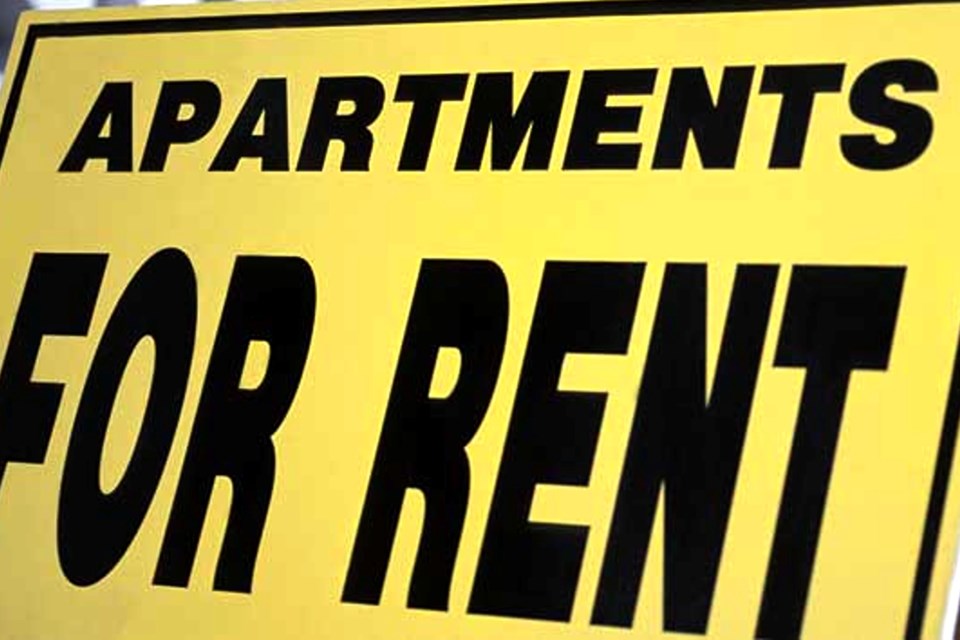Average market rental rates remained statistically unchanged in Greater Sudbury last year, which was a significant departure from the 8.4-per-cent increase recorded in 2021.
This, following Greater Sudbury’s average two-bedroom market rental rate, which at $1,254 in 2022 was down slightly from the $1,286 recorded the previous year.
Nationally, the average two-bedroom market rental rate was $1,258 in 2022 (up 5.6 per cent).
In the Canada Mortgage and Housing Corporation’s latest Rental Market Report released on Thursday, the change recorded in Greater Sudbury is considered “not statistically significant.”
Local vacancy rates were 2.3 per cent in 2022, which is up from the 1.8 per cent recorded in 2021.
There’s additional context beyond the numbers available in the report, CMHC senior analyst Tad Mangwengwende told Sudbury.com.
In the past year, there has been a shift in the type of units people are seeking in Greater Sudbury, resulting in vacancy rates growing for one-bedroom units and diminishing for three-bedroom units.
There was a decline in student renters in the Laurentian University area last year. They typically favour smaller units, while efforts such as the Rural and Northern Immigration Pilot to attract skilled workers has increased the need for larger units, creating an “underlying mismatch.”
“There’s a tight squeeze on those larger bedrooms,” Mangwengwende said, adding that newcomers often require larger accommodations because they bring families with them.
Despite this, average rental rates for three-bedroom units joined most other rental housing categories by dropping in price in 2022. The lone exception was bachelor units.
Comparing October row/apartment rental rates in 2022 against 2021, the average bachelor unit was $796 in 2022 ($749 in 2021), one-bedroom units were $931 ($1,030), two-bedroom units were $1,248 ($1,293), and three-bedroom units were $1,359 ($1,401).
The overall average market rental rate for all row/apartments in Greater Sudbury ($1,145 in 2022) has increased by 25.5 per cent in the past 10 years, and 47.8 per cent in the past 20 years.
One of the factors working to create a tighter rental market is that more people are staying in their rental accommodations. In New Sudbury, the turnover rate declined from 13.6 per cent in October 2021 to 8.4 per cent in October 2022, which the CMHC report cites as evidence more renters are choosing to stay in their rentals. Part of the rationale behind this, according to the report, is that higher interest rates are keeping more renters out of the home-ownership market.
Another factor is that few rentals are being created compared to residential construction starts.
In 2022, there were 23 market rental unit construction starts in Greater Sudbury, according to CMHC data, including 22 row house units and one apartment. This compares to 137 construction starts, all apartment units, in 2021.
Homeowner-destined construction starts in 2022 totalled 256 (126 single-family, 63 semi-detached and 67 row houses), which was a slight decrease from the 288 recorded in 2021.
There’s an affordability crunch when it comes to the city’s rental units, Mangwengwende said, noting the average two-bedroom rent is not affordable for the two lowest income quintiles (two-fifths of people), and is only affordable for some households in the third quintile.
Complicating matters is that there’s nothing stopping higher-income households from renting less-expensive units, which Mangwengwende said puts even further pressure on low-income residents.
With an ongoing push to bring skilled labour to Greater Sudbury, the report notes there will be an increased housing demand in the city’s already constrained rental market.
“Capital projects such as the construction of the Exploration Shaft Hoist House at Vale will also require more labour,” according to the report. “The Sudbury area is also a major producer of nickel. Growth in the global demand of this metal as an input in batteries and green vehicles will likely further increase labour demands in the area.”
Tyler Clarke covers city hall and political affairs for Sudbury.com.
